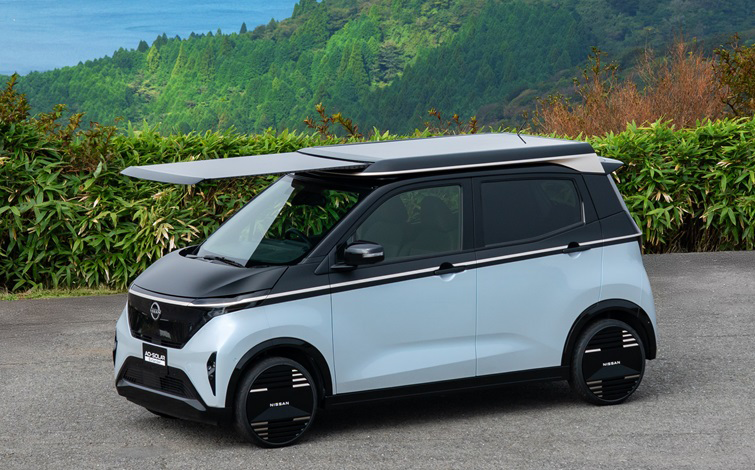In the previous article we compared the energy density of many battery packs used by popular electric cars. Most batteries were either NCM 523 or NCM 622 and on average had a gravimetric energy density between 140 and 150 Wh/kg, which is disappointing considering that’s a lot less than what we get at the cell level (230-250 Wh/kg).
The poor gravimetric energy density of current EV batteries can be explained by unnecessary complexity and in this article we’ll see an easy solution to make battery packs simpler, safer, cheaper and more energy dense.
First, to give you a bit of context, we’ll see where we are now.
Currently battery packs are like matryoshka dolls, inside them we have modules and inside the modules we have the important stuff that stores energy, the battery cells. This means that the weight of the battery cells represents only part of the total weight of the batteries.
Let’s see some examples of GCTPR (gravimetric cell-to-pack ratio) to better understand how inefficient weight-wise are current battery packs.
Renault ZOE (old ZE 40 battery)
This battery weighs 305 kg, of which 185 kg (61 %) are from the cells. The rest 120 kg (39 %) of the weight is from the metal cases, cabling, BMS (Battery Management System) and TMS (Thermal Management System).
- Battery pack weight: 305 kg
- Gravimetric energy density at battery pack level: 145 Wh/kg
- Battery cells weight: 185 kg (61 %)
- Gravimetric energy density at battery cell level: 245 Wh/kg
Renault ZOE (new ZE 50 battery)
This battery weighs 326 kg, of which 206 kg (63 %) are from the cells. The rest 120 kg (37 %) of the weight is from the metal cases, cabling, BMS (Battery Management System) and TMS (Thermal Management System).
- Battery pack weight: 326 kg
- Gravimetric energy density at battery pack level: 168 Wh/kg
- Battery cells weight: 206 kg (63 %)
- Gravimetric energy density at battery cell level: 265 Wh/kg
This battery weighs 303 kg, of which 175 kg (58 %) are from the cells. The rest 128 kg (42 %) of the weight is from the metal cases, cabling, BMS (Battery Management System) and TMS (Thermal Management System).
- Battery pack weight: 303 kg
- Gravimetric energy density at battery pack level: 130 Wh/kg
- Battery cells weight: 175 kg (58 %)
- Gravimetric energy density at battery cell level: 224 Wh/kg
Nissan LEAF (62 kWh battery)
This battery weighs 410 kg (estimation) of which 263 kg (64 %) are from the cells. The rest 147 kg (36 %) of the weight is from the metal cases, cabling, BMS (Battery Management System) and TMS (Thermal Management System).
- Battery pack weight: 410 kg
- Gravimetric energy density at battery pack level: 151 Wh/kg
- Battery cells weight: 263 kg (64 %)
- Gravimetric energy density at battery cell level: 224 Wh/kg
This battery weighs 256 kg, of which 193 kg (75 %) are from the cells. The rest 63 kg (25 %) of the weight is from the metal cases, cabling, BMS (Battery Management System) and TMS (Thermal Management System).
- Battery pack weight: 256 kg
- Gravimetric energy density at battery pack level: 132 Wh/kg
- Battery cells weight: 175 kg (75 %)
- Gravimetric energy density at battery cell level: 175 Wh/kg
BMW i3 (120 Ah battery)
This battery weighs 278 kg, of which 215 kg (77 %) are from the cells. The rest 63 kg (23 %) of the weight is from the metal cases, cabling, BMS (Battery Management System) and TMS (Thermal Management System).
- Battery pack weight: 278 kg
- Gravimetric energy density at battery pack level: 152 Wh/kg
- Battery cells weight: 215 kg (77 %)
- Gravimetric energy density at battery cell level: 207 Wh/kg
As I mentioned many times before, the BMW i3’s battery is by far my favorite EV battery.
Here’s why:
- Made with extremely durable prismatic NCM Samsung SDI cells (94 and 120 Ah versions, the 60 Ah isn’t that great).
- The disposition of the cells is what it should always be, which is side by side, for better heat dissipation. Having cells on top of each other - like the Nissan LEAF battery pack has - is not a good idea, the cells on top will get hotter and degrade faster.
- Good active TMS (Thermal Management System) with liquid cooling for keeping the battery at recommended temperature is very important.
- KISS (Keep It Simple, Stupid) principle, since it only has 96 cells all connected in series, none in parallel.
The battery pack of the BMW i3 has the highest GCTPR (gravimetric cell-to-pack ratio) of mainstream EV batteries due to its simplicity. Few big prismatic cells, all connected in series require less cabling and cases for modules.
A GCTPR of 77 % is very good for a conventional battery pack, however it could be even better with the CTP (cell-to-pack) technology.
With the CTP technology instead of having battery cells inside modules, then modules inside battery packs, we remove modules altogether. We end up with long prismatic battery cells connected in series that are put in an array and then inserted into a battery pack, making it as simple as it can be.
Various Chinese battery cell makers such as BYD, CATL and SVOLT already have their own versions of CTP battery packs.
BYD
The simplicity of the BYD Blade Battery is visible in the image above. Imagine how simple it is to assemble or replace cells in this battery pack. BYD says that this battery has at least 100 cells (all connected in series).
Moreover, with CTP technology battery packs made with cobalt-free LFP/LFMP cells achieve energy density levels of around 140-160 Wh/kg, which are equivalent to what we currently get with EV batteries made with more expensive and less safe NCM 523 and NCM 622 cells.
CTP is just another technological breakthrough that helps the comeback of LFP battery cells to electric cars. I think that now there’s no doubt that LFP/LFMP battery cells will play an important role in the massification of electric cars.
BYD Blade Battery highlights:
- VCTPR (volumetric cell-to-pack ratio): 62,4 %
- GCTPR (gravimetric cell-to-pack ratio): 84,5 %
This means that in the BYD Blade Battery, battery cells represent 62,4 % of the volume and 84,5 % of the weight. Mainstream battery packs made with modules have on average a VCTPR of 40 % and a GCTPR of 60 %.
Nonetheless, the BYD Blade Battery isn’t only about increasing the energy density of battery packs. Regarding safety this battery is hard to beat. Not only the LFP/LFMP chemistries are extremely safe on their own, the long rectangular shape of the cells provides a large cooling area and reduces the ability to generate heat during a short-circuit.
Furthermore, what’s really interesting is that we won’t have to wait years to see this technology being implemented. The upcoming electric car BYD Han EV arrives this June and will come equipped with a BYD Blade Battery.
The Han EV, BYD’s flagship sedan model slated for launch this June, will come equipped with the Blade Battery. The new model will lead the brand’s Dynasty Family, boasting a cruising range of 605 kilometers and an acceleration of 0 to 100km/h in just 3.9 seconds.
The BYD Han EV is a really interesting electric car, the 605 km range in NEDC should translate in around 450 km (280 miles) in the more realistic WLTP test cycle.
While BYD’s electric cars aren’t very popular outside its domestic market China yet, BYD’s electric buses are already extremely popular worldwide and these electric vehicles will probably get CTP batteries down the road.
BYD’s energy density goals: 140-160 Wh/kg for cobalt-free LFP/LFMP chemistries
CATL
While BYD is more focused in cobalt-free LFP/LFMP batteries, CATL is working in two fronts and wants to apply the CTP technology not only to cobalt-free LFP/LFMP batteries, but also to more energy-dense NCM batteries.
CATL is already producing CTP battery packs for the Chinese carmaker BAIC.
CATL’s energy density goals: 145-160 Wh/kg for cobalt-free LFP/LFMP chemistries and 200 Wh/kg for NCM chemistries
SVOLT
SVOLT is focused to apply CTP technology to more energy dense NCMA batteries. Unfortunately there isn’t much information available about it.
SVOLT’s energy density goals: above 200 Wh/kg for NCMA chemistries
Summing up.
It’s just a matter of time before CTP becomes the mainstream technology to build simpler, safer, cheaper and more energy-dense battery packs. Moreover, we don’t have to wait years to get cobalt-free battery packs with decent energy density that are extremely safe and cheap. BYD Blade Battery is really impressive. Warren Buffett has reasons to be really happy about his bet on BYD years ago.
Furthermore, the kWh cost of cobalt-free LFP/LFMP batteries is around 20 % cheaper than high nickel-content batteries like NCM 811. Nonetheless, even without LFP/LFMP battery cells Volkswagen already has the kWh cost below 100 euros, which proves that automakers could make electric cars with decent range affordable right now if they were interested in selling them.
Anyway, I’m really interested to know more about the SVOLT and CATL’s implementations of the CTP technology. For the moment we have more details about BYD’s own version of CTP.
Moreover, I also wonder how long will Korean battery cell makers take to realize the importance of cobalt-free batteries and start producing them. Right now Chinese companies like BYD and CATL are the uncontested experts in these chemistries. However, it would be great to see LG Chem and Samsung SDI working to improve the LFMP chemistry.
Finally, I’m very optimistic and expect that in the near future (one or two years) most electric cars will be available with LFMP (optimized for cost) and NCMA (optimized for range) battery packs made with simple CTP technology.
More info:
https://en.byd.com/news-posts/byds-new-blade-battery-set-to-redefine-ev-safety-standards/

